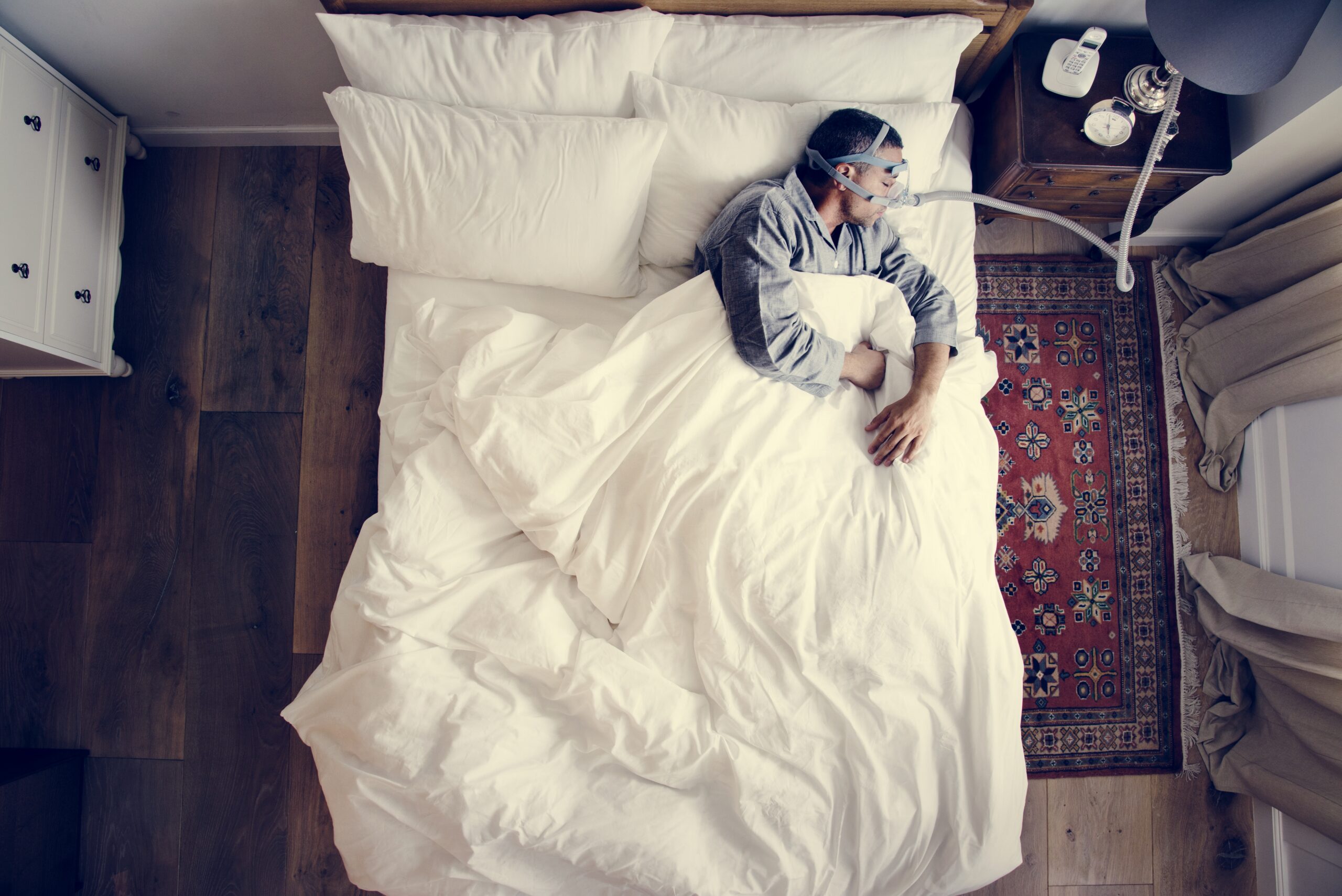A Guide for Sleep Apnea Patients: Getting Used to Your CPAP Therapy

- Author: Craig Fox
Millions of people all over the world are affected by the widespread sleep ailment known as sleep apnea. Sleep apnea causes breathing pauses while you sleep and can result in a number of health issues, including high blood pressure, stroke, heart disease and has the potential to be fatal. Continuous Positive Airway Pressure (CPAP) therapy is one of the best, and more perscribed ways to treat sleep apnea. And while CPAP therapy works, many people find it difficult to adjust to wearing a mask due to the pressure. In fact almost 50% of new users don’t contunue therapy due to the negative side effects.
Needless to say, adaption to CPAP is a challange for a large number of people. To help, we’ve put together a guide with some ideas to help you adjust to your CPAP therapy.
Begin CPAP therapy slowly
It might take some time for people to become used to wearing a mask and having air pressure blown into their airways while they sleep, thus it is advised to start CPAP therapy gently. It may take a few days, weeks or even months for some people to get acclimated to the therapy. Remember, the potential benefits of your therapy can greatly outweight the inital discomfort of the therapy.
Starting out gradually can also aid in avoiding potential adverse effects like skin irritability, discomfort from the mask, or claustrophobia. As CPAP therapy is typically most successful when used consistently and correctly, it’s crucial to be patient and give yourself time to acclimate. Having problems getting used to CPAP, talk to your doctor or a sleep specialist.
When you first start CPAP therapy, it’s important to be realistic with your expectations. Don’t expect to be scoring 100% on your first night. Remember this is a process, you’re body will eventually adapt to the mask and the pressure, but it takes time. A great piece of advice is to try getting used to your mask by wearing it even when your not trying to sleep. The more exposure your face has to the mask, the quicker it will adopt to wearing it.
Get V-Com for CPAP
Are you just getting started with CPAP? We strongly recommend using the V-Com device to your circuit. Over 98% of new sleep apnea patients prefer to have the device in their circut. And it has made a world of difference to existing CPAP users. V-Com adapts to any machine on the market and is designed to make CPAP therapy more comfortable by reducing the negative effects of your therapy like uncomfortable pressure, mask leaks, excessive noise and more. And best of all, has no effect on your therapy and has been used thousands of individuals who are struggling with CPAP.
If you want to learn more about V-Com and how if can help, click here.
Join a CPAP therapy support group
Also it’s a good idea to join some CPAP support groups on Facebook. We’ve listed a few we participate in below:
- Cpap support group
- CPAP for Beginners Support Group
- Sleep Apnea and CPAP machine and mask support group

Choose the correct mask
It’s crucial to pick the right mask since it influences how comfortable and effective your therapy will be. While the ideal mask should be simple for you to use and adjust, a comfortable and properly fitting mask can aid to promote compliance and make it simpler to remain with the therapy. As each sort of mask, including nasal pillows, full-face masks, and full-face masks, has advantages and disadvantages of its own, it’s crucial to pick one that best suits your requirements.
You can choose the best course of action for yourself by consulting with your healthcare practitioner.
Not sure which one if right for you? The sleepfoundation.org has put togther a list of the top CPAP masks for 2023.
Configure the settings
Changing the pressure settings on your machine will be necessary to ensure effective treatment for sleep apnea. The pressure settings are prescribed by a healthcare provider based on the individual’s needs. These can be adjusted if the initial settings are not providing adequate relief, or if you experience discomfort. Changing the pressure settings can also be necessary if you experience weight gain or experience new symptoms. It’s important to regularly monitor the effectiveness of the therapy and make adjustments as needed for best results.
For most people, an appropriate CPAP pressure is between 6 and 14 cmH2O, with an average of 10 cmH2O. Be sure to consult with you sleep specialist to determine what specific level is right for you.
Create a routine
Creating a routine is important to ensure consistent and effective treatment. This includes using the machine every night, wearing the mask as directed, and making necessary adjustments to the pressure settings. Establishing a routine can help make CPAP therapy a habit and improve compliance. Leading to better overall results and improved quality of life. Regular monitoring of the therapy’s effectiveness, along with regular doctor check-ins, ensure the therapy is working effectively.

Change as necessary
Making changes when is no longer pleasant or effective is important for the success of your sleep apnea treatment. Factors such as discomfort from the mask, pressure that is too high or low, or difficulty sleeping with the machine can all contribute to a lack of enjoyment or effectiveness. Making adjustments, such as trying a different mask, changing the pressure settings, or using accessories to improve comfort, can help improve the experience and ensure that the therapy is working effectively. It’s important to regularly monitor the therapy and make changes as needed to ensure the best possible results and improve overall quality of life. Consultation with a healthcare provider can also help determine the best course of action.
Also be sure to clean your machine and mask as recommended by the manufactures. Most manufactures recommend washing out the mask, tubing and CPAP humidifier chamber at least once a week. Rinsing the mask and hose daily is also a good practice. While your cleaning, be sure to visually inspect your equipment for potential leak and check the mask to insure it can maintain a proper seal.
Stay upbeat
Most importantly, be sure to stay positive. Yes, you will have setbacks, but don’t develop a negative attitude. Focusing on the benefits of the therapy, such as reduced sleep apnea symptoms, increased energy levels, and improved overall health, can help maintain motivation to use it. Additionally, making the therapy as comfortable as possible by finding the right mask and accessories, and creating a peaceful and conducive sleep environment, can also help improve the experience.
It’s also important to be proactive about addressing any challenges that may arise. If discomfort or difficulties arise, it’s important to reach out to a healthcare provider for guidance and support. Seeking support from others who use CPAP therapy, such as through online forums or support groups, can also provide a sense of community and encouragement. Regular monitoring of the therapy’s effectiveness, along with check-ins with a healthcare provider, can help ensure that the therapy is working well and make any necessary adjustments. By staying upbeat and proactive, CPAP therapy can be a positive and effective tool for managing sleep apnea.
In conclusion, it may take some time to get used to your CPAP machine, but with perseverance and patience, you may learn to operate it successfully and pleasantly. Talk to your healthcare professional about changing your CPAP machine or trying an alternative kind of treatment if you’re having problems getting acclimated to it. You can control your sleep apnea and have a better quality of life with the correct care and assistance.
Ready to get started?
Optimize and improve your sleep apnea treatment with V-ComTM, no prescription required!
30 Day Money-Back Guarantee
